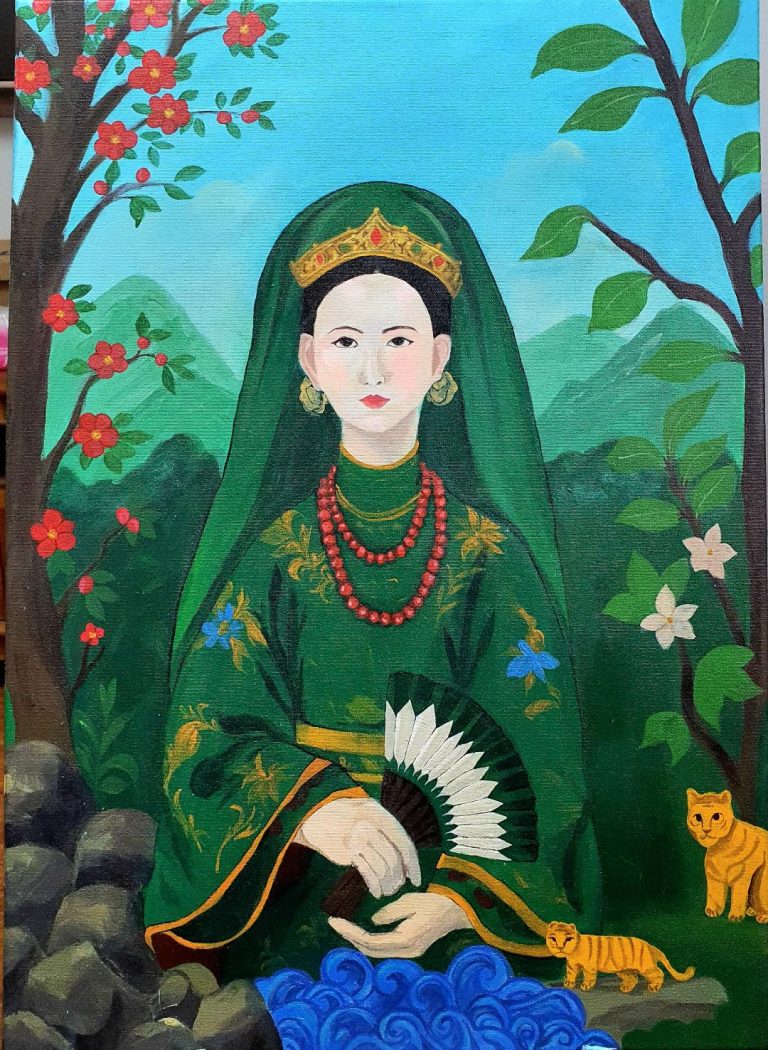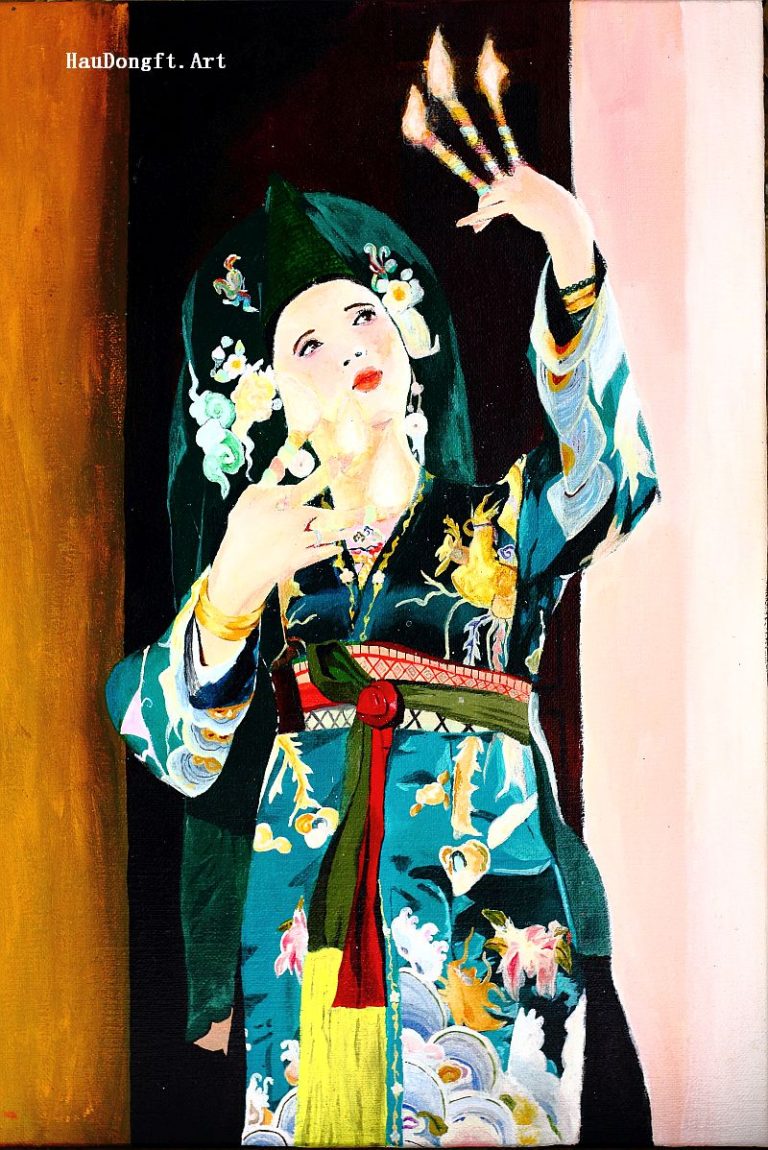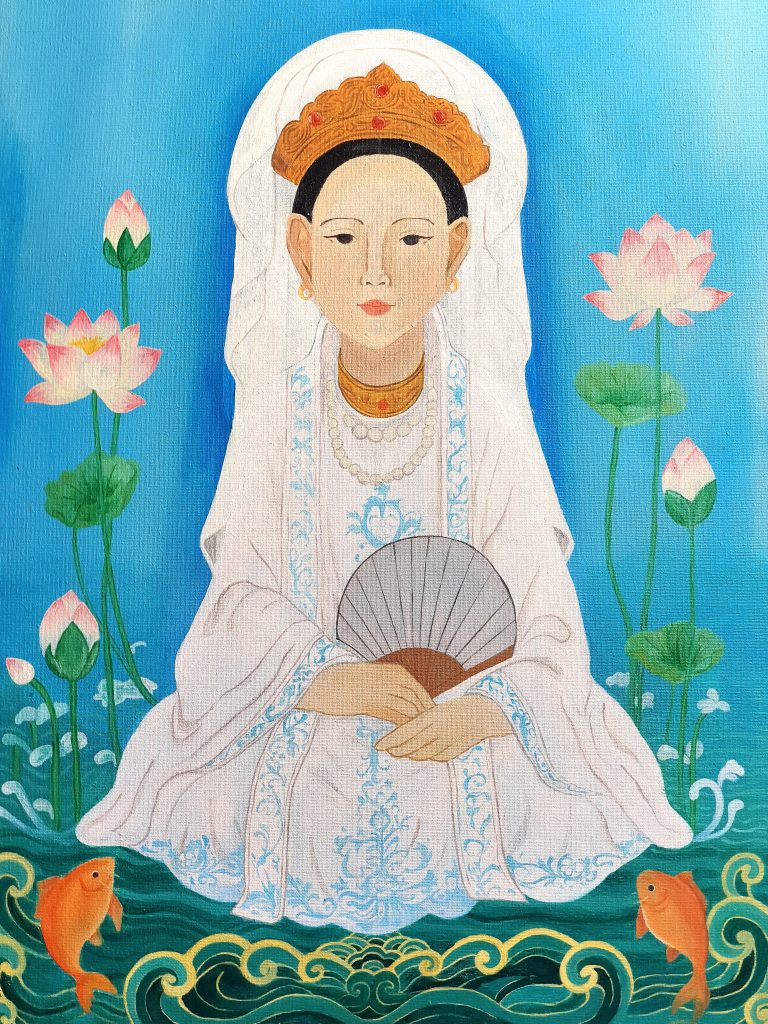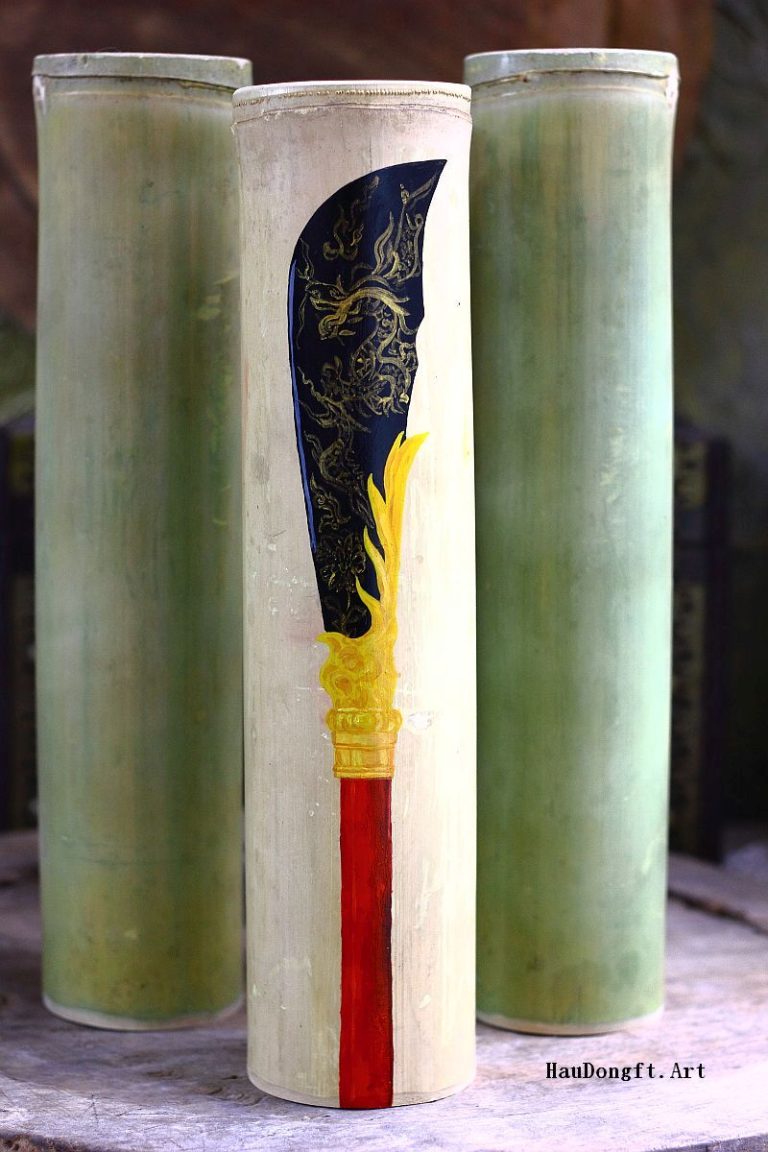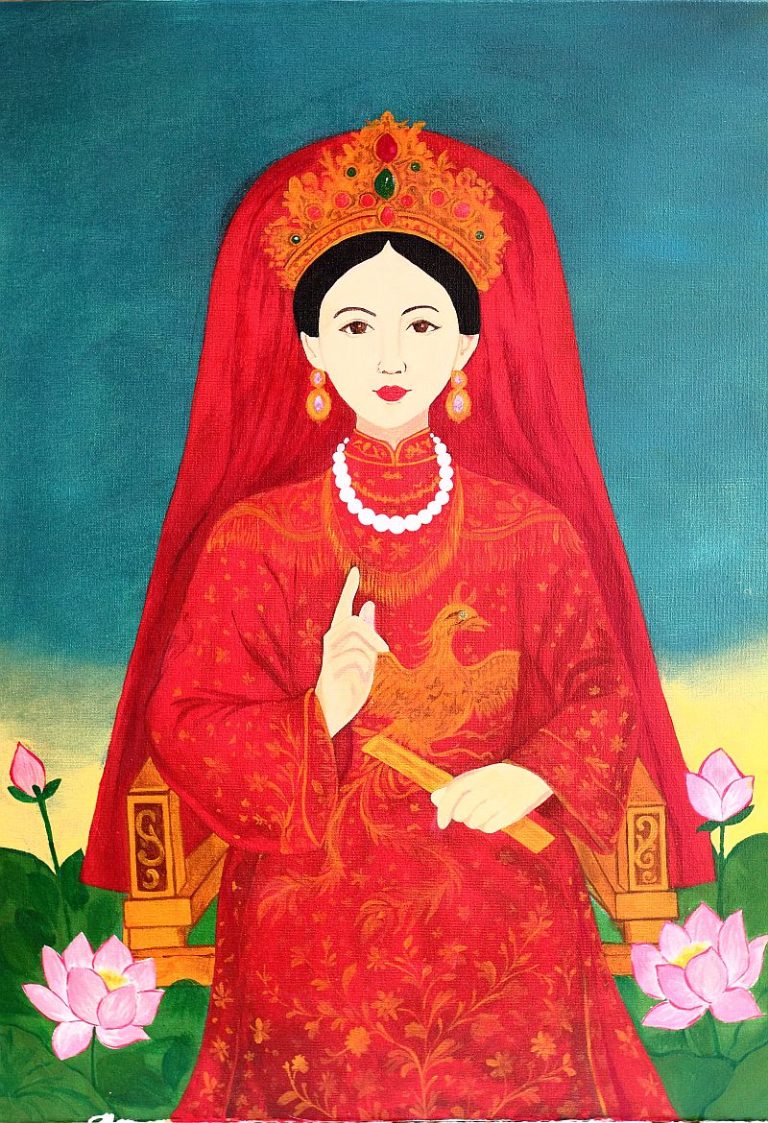The red veil (khăn phủ diện) is not merely a ritual implement but a symbol imbued with profound spiritual significance within the Mother Goddess Belief of the Three Palaces (Đạo Mẫu Tam Phủ). Placed over the head of the medium (đồng nhân) prior to each trance performance (giá hầu), the veil marks a liminal moment—a transitional state in which the practitioner prepares to shift from ordinary human identity to the embodied presence of deities and spirits.
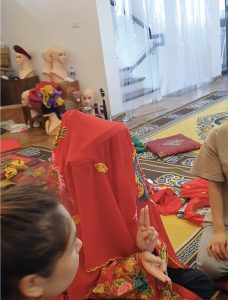
Me covered in the red veil during a mediumship rehearsal workshop
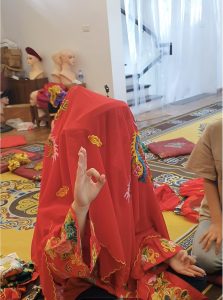
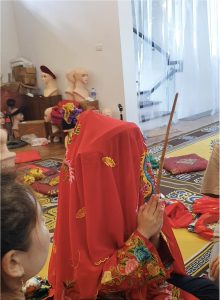
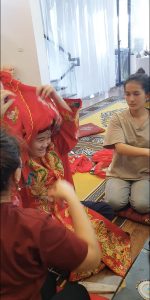
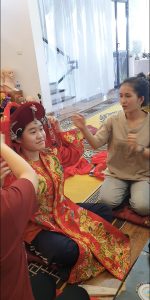 \
\
Functioning as a sacred boundary, the red veil delineates two ontological realms: the profane and the sacred, the human and the divine, the visible and the invisible. Its removal signifies the opening of the spiritual threshold, heralding the descent of the deities into the medium’s body. At this juncture, the medium assumes the role of an intermediary, serving as a conduit between the transcendent world and the human domain.
Within Vietnamese folk cosmology, the color red is associated with the Heavenly Palace, symbolizing the First Mother Goddess (Mẫu Đệ Nhất Thiên Tiên) and the Mother Goddess faith more broadly, embodying notions of sanctity, authority, and protective spiritual energy. Accordingly, the red veil is not only an instrument of ritual concealment but also an apotropaic device, safeguarding the medium’s spiritual focus and inner composure during the transformative moment of spirit possession.
Analogous to the gesture of joining hands before a solemn ritual, the act of veiling expresses humility, reverence, and receptivity to divine presence. It signifies the medium’s intentional withdrawal of the ego and readiness to submit to spiritual guidance, thereby affirming the central ethos of devotion and transformation within Đạo Mẫu practice.
Medium Diệp Minh Châu in her trance for Mother Goddess’s descend
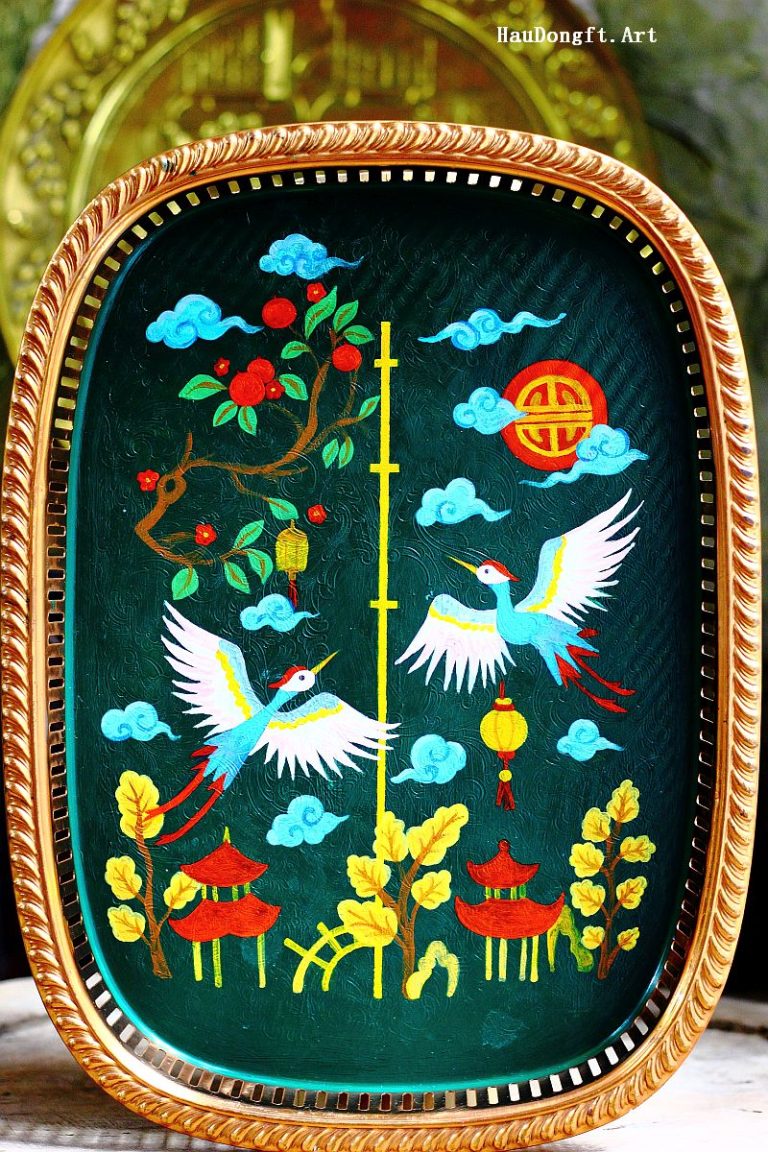





 \
\